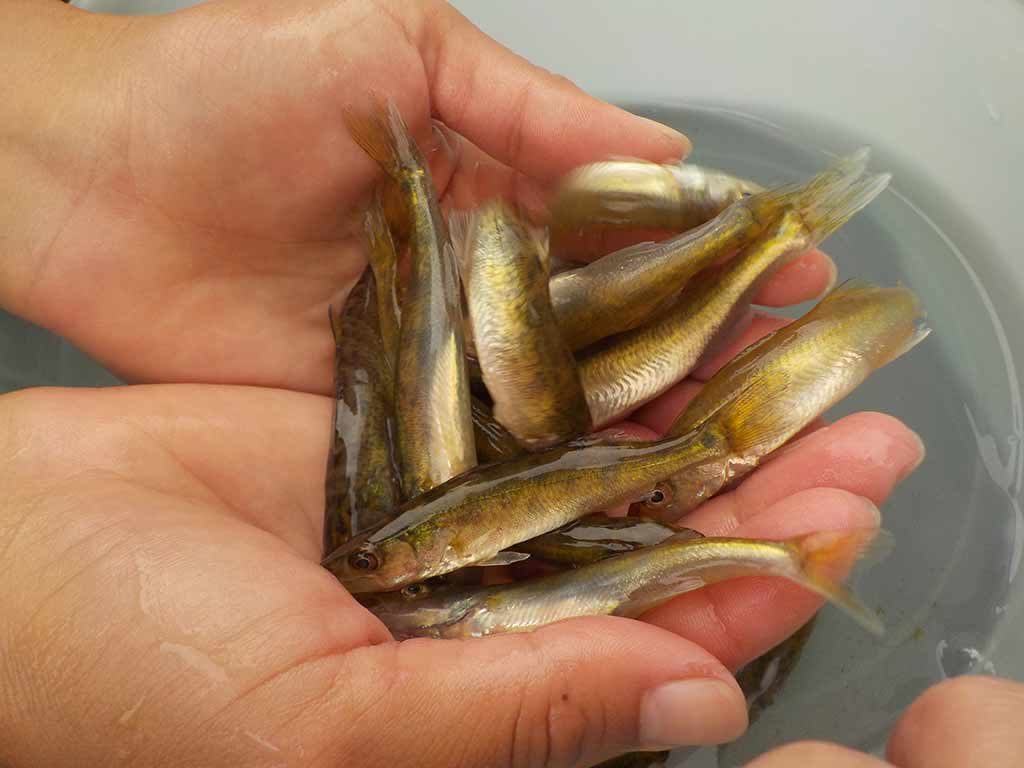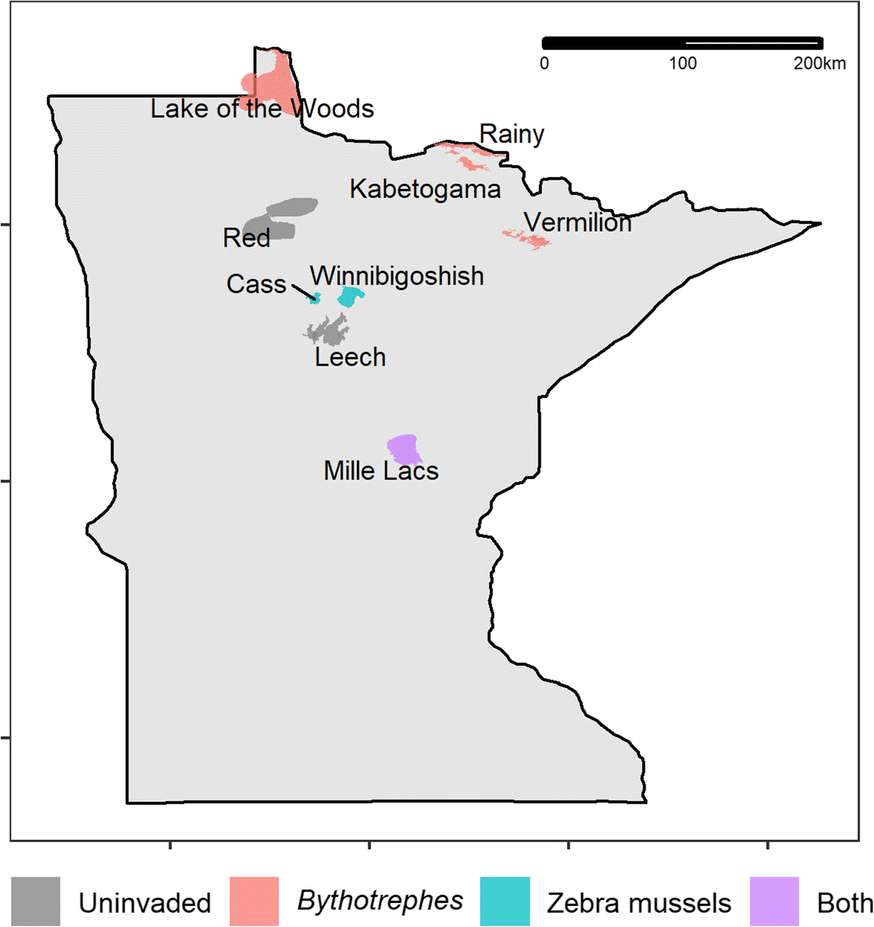
New research conducted in Rainy Lake, Kabetogama, Lake Vermilion, and other Minnesota lakes shows that young walleye grow less quickly in lakes infested with spiny waterflea and zebra mussels, than their counterparts in uninfested waters. It could have important implications for sport fishing, though more research remains to be done.
Dr. Gretchen Hansen at the University of Minnesota analyzed data from 10 of Minnesota’s biggest lakes, all of them popular walleye fisheries. Together, the lakes represent one-third of the state’s annual walleye harvest.
First-year walleye in the infested lakes were 12 to 14 percent smaller than elsewhere.
“Understanding how these invasive species disrupt walleye food sources will allow managers to better project realistic levels of walleye production and harvest,” the researchers said.
The researchers used fisheries sampling information from the DNR from 1983 to 2015, looking at the lengths of 50,012 walleye and 176,983 yellow perch.
Study lakes in the Quetico-Superior region included Rainy, Kabetogama, and Vermilion, all of which have been infested with spiny waterflea, a non-native form of zooplankton that eats other plankton but is itself essentially inedible.

Zebra mussels also consume large quantities of plankton, and it’s thought that competing with young fish for this food may be to blame for slow growth.
“Smaller first-year size is related to walleye survival and recruitment to later life stages and has important implications for lake food webs and fisheries management,” the research article, published in the journal Biological Invasions, states.
Are other fish species affected?
But the study also looked at yellow perch populations in the lakes, and found little connection between invasives and perch growth, even though perch also feed on plankton. The study’s author told MPR News that it’s possible the invasive species are creating clearer water by filtering out so much plankton, which puts walleye at a disadvantage. Perch are also thought to be more adaptable to different food sources if an invasive species affects their normal diet.
“Yellow perch might be buffered from the negative effects of these changes because they can consume these less preferred prey items sooner and more easily than walleye,” the paper states.
Slower growth, lower winter survival, increased predaation
The authors say that previous research has shown how slow growth of young fish can cause higher mortality rates because of more predation, lower energy reserves leading to lower winter survival, and later access to more energetically profitable prey items
Hansen and her partners next plan to expand the study to small and medium lakes, and look at other related issues, like mercury. They will also seek to understand how the effects on young fish affect later growth and survival.
The study was conducted with a grant from the Minnesota Aquatic Invasive Species Research Center, funded by Environment and Natural Resources Trust Fund as recommended by the Legislative-Citizen Commission on Minnesota Resources.
Watch a short video about the project from 2018:
More information
- Hansen, G.J.A., Ahrenstorff, T.D., Bethke, B.J. et al. Biol Invasions (2020). https://doi.org/10.1007/s10530-020-02198-5 Walleye growth declines following zebra mussel and Bythotrephes invasion – Biological Invasions
- Study: Young walleye are smaller in MN lakes with zebra mussels, spiny waterflea – MPR News
- Sustaining walleye populations: assessing impacts of AIS – Minnesota Aquatic Invasive Species Research Center
Anglers asked for input on walleye limits in Voyageurs National Park and nearby lakes

